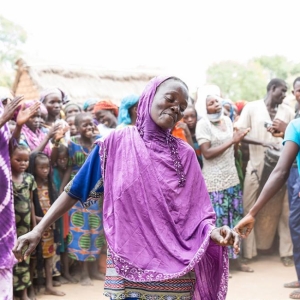Indicators in this domain assess the extent to which migrants have the same status as citizens in terms of access to basic social services such as health, education, and social security. It also describes the rights of migrants to family reunification, to work, and to residency and citizenship. The ratification of the main international conventions is also included within this domain.
Indicators in this category look at the extent to which migrants have access to certain social services such as health, education and social security. They also examine measures to ensure integration and access to work.
Indicators in this domain assess countries’ institutional, legal, and regulatory frameworks related to migration policies. Domain 2 also reviews the existence of national migration strategies that are in-line with development, as well as institutional transparency and coherence in relation to migration management. This domain also investigates the extent to which governments collect and use migration data.
Indicators in this category assess the institutional frameworks of cities for migration. This area also examines the existence of migration strategies consistent with development objectives, as well as institutional transparency and coherence in migration management.
This domain focuses on countries’ efforts to cooperate on migration-related issues with other states and with relevant non-governmental actors, including civil society organizations and the private sector. Cooperation can lead to improvements in governance by aligning and raising standards, increasing dialogue and providing structures to overcome challenges.
Indicators in this category focus on cities’ efforts to cooperate on migration issues with the national government as well as other cities and relevant non-governmental actors, including civil society organizations and the private sector.
This domain includes indicators on countries’ policies for managing the socioeconomic well-being of migrants, through aspects such as the recognition of migrants’ educational and professional qualifications, provisions regulating student migration and the existence of bilateral labour agreements between countries. Indicators equally focus on policies and strategies related to diaspora engagement and migrant remittances.
Indicators in this category assess cities’ initiatives in terms of international student mobility, access to the labour market and decent working conditions for migrant workers. Aspects related to diaspora engagement and migrant remittances are also included in this domain.
This domain studies the type and level of preparedness of countries when they are faced with mobility dimensions of crises, linked to either disasters, the environment and/or conflict. The questions are used to identify the processes in place for nationals and non-nationals both during and after disasters, including whether humanitarian assistance is equally available to migrants as it is to citizens.
Indicators in this category examine the type and level of readiness of cities to deal with aspects of mobility crises. The questions focus on the processes in place for citizens and non-citizens both during and after disasters, especially if humanitarian assistance is available for migrants and citizens.
This domain analyses countries’ approach to migration management in terms of border control and enforcement policies, admission criteria for migrants, preparedness and resilience in the case of significant and unexpected migration flows, as well as the fight against trafficking in human beings and smuggling of migrants. It also assesses efforts and incentives to help integrate returning citizens.
Indicators in this category look at the cities’ approaches to migrant safety as well as return and reintegration policies and the fight against trafficking in persons.
This country Profile describes examples of well-developed areas of North Macedonia’s migration governance structures and areas with potential for further development, as evaluated through the six domains of the Migration Governance Indicators (MGI). These address migrants’ rights, a “whole-of-government” approach, partnerships, socioeconomic well-being of migrants, the mobility dimensions of crises, and safe and orderly migration.
Click the icons on the wheel to explore the key findings.
The Migration Governance Indicators (MGI) initiative is a policy-benchmarking programme led by the International Organization for Migration (IOM) and implemented with research and analysis from the Economist Intelligence Unit. Funding is provided by IOM Member States.
Migration Governance: examples of well-developed areas
- All migrants have equal access as citizens to primary education.
- All migrants have equal access as citizens to social protection schemes.
- All migrants have access to family reunification.
Areas with potential for further development
- Migrants have access to healthcare depending on their migratory status.
- Only certain categories of migrants may apply for a permanent residence permit.
- North Macedonia does not have specific frameworks focusing on hate crimes, violence, xenophobia or discrimination against migrants.
Migration Governance: examples of well-developed areas
- The Resolution on Migration Policy is updated and adopted by the Assembly of North Macedonia every six years.
- The Ministry of Foreign Affairs provides online information on visa types, requirements and procedures for immigration to North Macedonia.
- North Macedonia regularly collects and analyses migration data in addition to the census.
- The Emigration Agency is responsible for coordinating efforts to engage with the North Macedonian diaspora.
Areas with potential for further development
- A new working group is established every time a new Resolution on Migration Policy needs to be drafted and has a limited role to monitor its implementation
Migration Governance: examples of well-developed areas
- North Macedonia participates in several regional consultative processes, including the Migration, Asylum, Refugees Regional Initiative, the Prague Process and the Budapest Process.
- North Macedonia has memoranda of cooperation/understanding and declarations of intent to cooperate on labour and social policy with nine countries.
- The country has bilateral cooperation agreements on labour migration issues with several countries.
Areas with potential for further development
- North Macedonia only partially engages with civil society organizations in the development and implementation of migration policy.
- North Macedonia only engages with its diaspora on an ad hoc basis.
- The country does not formally engage the private sector in discussions on migration issues.
Migration Governance: examples of well-developed areas
- North Macedonia promotes ethical recruitment of migrant workers under its Law on Private Employment Agencies.
- The Law on Employment and Work of Foreigners includes specific provisions for the protection of migrant workers.
- North Macedonia participates in international schemes to ensure common qualification frameworks.
Areas with potential for further development
- The Government sets an annual quota of work permits to limit the number of foreigners in the labour market.
- Data on the labour market and labour migration do not cover demand for migrant workers or the effects of emigration on the labour market.
- There are limited measures to protect the rights of North Macedonian citizens abroad.
Migration Governance: examples of well-developed areas
- The Ministry of Labour and Social Policy implements measures dealing with massive influx of migrants.
- The National Platform of North Macedonia for Disaster Risk Reduction acknowledges the needs and vulnerability of migrants, asylum seekers and refugees.
Areas with potential for further development
- Crisis-related communication channels do not consider the language needs of migrants.
- North Macedonia’s national development strategy does not contain specific provisions on the reintegration of residents (both nationals and foreigners) after a crisis.
Migration Governance: examples of well-developed areas
- The National Integrated Border Management Coordination Centre facilitates the exchange of data and information between border management agencies.
- Border police receive regular training from both government departments and international organizations.
- The National Commission for Combating Trafficking in Human Beings and Illegal Migration is responsible for both the development and the implementation of the National Strategy for Combating Human Trafficking and Illegal Migration.
- North Macedonia has formal cooperation agreements with other countries regarding combatting migrant smuggling.
Areas with potential for further development
- The Ministry of Interior may detain a migrant for 24 hours to carry out a “removal procedure”, as established by the Law on Foreigners.
- Programmes to facilitate the reintegration of nationals living abroad are only implemented on an ad hoc basis.




